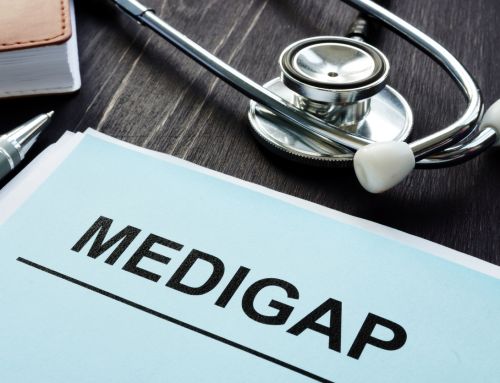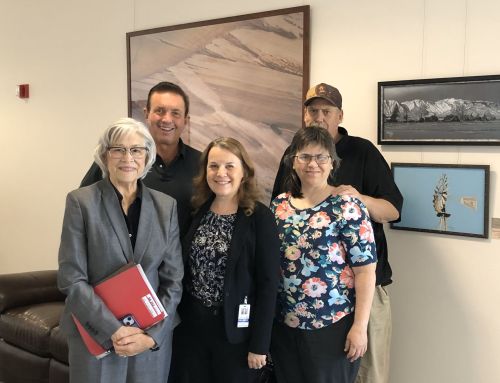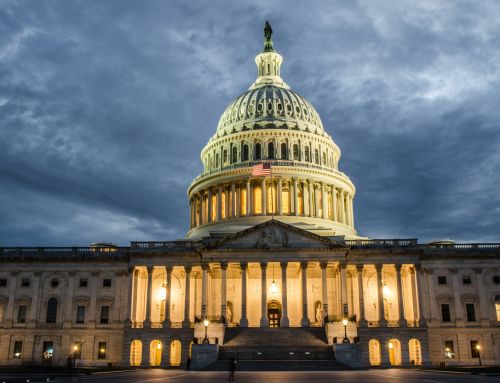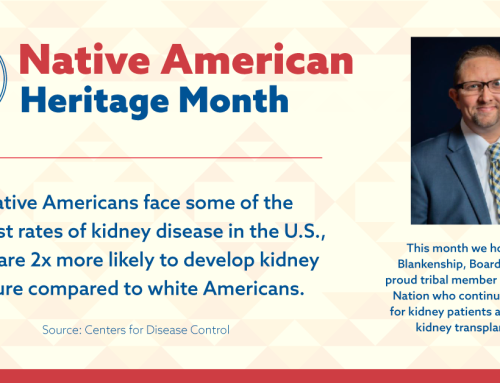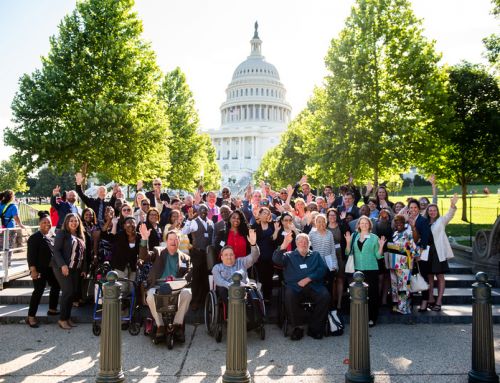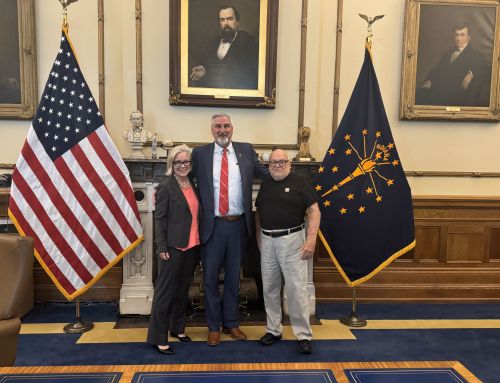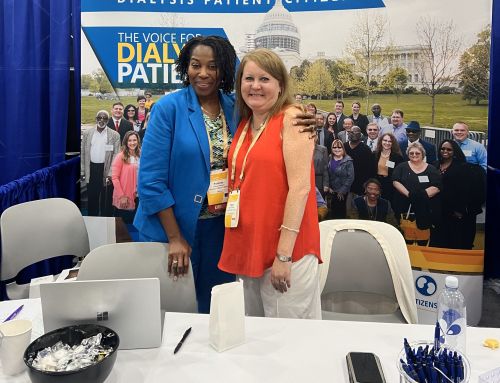August 18, 2022
Hon. Chiquita Brooks-LaSure, Administrator
Centers for Medicare & Medicaid Services
7500 Security Boulevard
Baltimore, MD 21244
Re: End Stage Renal Disease (ESRD) Prospective Payment System (PPS) Calendar Year (CY) 2023 Proposed Rule (CMS-1768-P)
Dear Administrator Brooks-LaSure:
Dialysis Patient Citizens (DPC) writes to offer its comments on the above referenced proposed rule.
DPC’s membership, currently over 30,000, is restricted to kidney disease patients and their family members. DPC is a patient-led organization. Our by-laws require that the President, Vice President and at least 51% of the Board be current dialysis patients. The non-dialysis patients serving on our Board are former dialysis patients with kidney transplants. Our volunteer board members have represented their peers on CMS technical expert panels and/or advisory committees of other health care organizations such as the National Quality Forum and Patient-Centered Outcomes Research Institute. DPC also conducts periodic Membership Surveys to ascertain patients’ experiences with their care and views on health policy issues. DPC is committed to promoting access to high-quality dialysis care for individuals with ESRD; to prevention of, delayed onset of, and safe transition to ESRD among individuals with chronic kidney disease; and access to kidney transplantation as well as to other alternatives to dialysis that may emerge.
I. ESRD Prospective Payment System Issues
We are disheartened that the Rule does not address the shortage of labor that threatens to disrupt dialysis treatments for kidney patients. We have urged the Agency to develop plans for health care workforce generally and dialysis workforce in particular over the long term; and also to act immediately, during this Medicare payment rulemaking cycle, to ensure that patients can receive timely and completely the treatments they are prescribed. What we find in the Rule is an incongruous situation where the CMS component that we and other stakeholders have asked to alleviate the problem, the Center for Medicare, does not acknowledge the shortages; while another component, the Center for Clinical Standards and Quality, does acknowledge it but, we believe, misdiagnoses the problem.
CCSQ proposes to suppress ICAHPS measures from the QIP due to labor shortages it attributes to the COVID pandemic. While we acknowledge that the pandemic precipitated the appearance of workforce shortages at this time, we do not believe that labor shortages are a temporary, COVID-related phenomenon, but a secular demographic shift. It is clear that the American workforce as a whole has shrunk, as indicated by a smaller percentage of working-age adults who hold or are seeking jobs. Fourteen years ago, the Institute of Medicine issued its report, Retooling for an Aging America: Building the Health Care Workforce that warned of looming health workforce shortages resulting from an aging population. The era foreseen by that report has likely arrived. Media reports indicate recent closures of dialysis facilities in Coatesville, PA and Payson, AZ due to staffing shortages.
The inadequate payment update in the Rule demonstrates that, as we feared, Medicare’s traditional price-setting processes are not agile enough to adapt to today’s unusual conditions. To some extent, Medicare’s administered pricing system and pay-for-performance adjustments are premised on “assuming away” scarcity. As CCSQ acknowledges, labor scarcity can no longer be assumed away. CMS must be creative in developing and implementing policies that respond to these perilous conditions, on an urgent basis before any harm can befall patients. We urge the Agency to take the immediate actions recommended in the Kidney Care Partners comment letter to provide relief to facilities.
Currently, there are nearly two job openings for every available unemployed worker. Over the short term, a recession may mitigate this, but the best we can hope for is a temporary reprieve. Vulnerable patients need a labor market in which there is a one-to-one ratio of health care workers for vacancies in essential jobs. Over the long term, the government may need to act to foster interest among young people in healthcare careers and facilitate their preparation for such roles. But in the immediate term, it is necessary to ensure that wages for jobs like dialysis technicians is competitive. Jobs that are challenging and require in-person performance at a fixed workplace will likely require a premium in salary over those that do not require commuting, especially with higher fuel prices. It appears from news reports that government jobs with rigid pre-set salary schedules, that can’t adjust to quickly evolving circumstances, are further disfavored by those seeking work. We worry that employee pay reliant on annual Medicare payment adjustments too closely resembles this situation.
Up to now, larger dialysis organizations have not been hamstrung by Medicare’s famously parsimonious payment policies, because a significant portion of their revenues has come from commercial insurance. The recent Supreme Court decision gutting patient protections in the Medicare Secondary Payer Act will make providers far more dependent on Medicare reimbursements. This in turn means that salary raises could become contingent on and linked to increases in the ESRD PPS. Jobs with wages that lag behind those in the overall labor market will have difficulty attracting and retaining workers. Patients could be at risk of annual exoduses of their careworkers depending on whether CMS finalizes an annual rule that is adequate or not.
We ask that CMS use its existing statutory authority to develop a new adjuster mechanism for the labor component of prices that ensures patient access and worker retention. Such a Patient Access and Careworker Retention Adjuster should recognize the rapid changes that have taken place in labor markets over the past two years; acknowledge that healthcare providers often compete with non-health employers for the same workers; and appreciate that this challenging work should be compensated in proportion to its value to patients and to society as a whole. This requires departing from rote application of stale data and payment formulas developed for an era when labor was plentiful. Ideally the adjuster should use the most recent wage data available, from any reliable source, and “float” on a less-than-annual basis to reflect immediate changes.
We also urge HHS to convene providers, labor representatives, and health field educators to develop a national healthcare workforce strategy with special attention to kidney care. As greater wealth and purchasing power become concentrated among upper-income consumers, we must expect markets to allocate greater remuneration toward workers producing luxury and other high-end goods and services. The government is going to have to intervene to assure that low- and middle-income beneficiaries retain access to the services covered in Medicare’s guarantee of kidney care.
Payment for Innovative New Products.
We are pleased and relieved that the Agency is finally considering establishment of an add-on payment adjustment for renal dialysis drugs and biological products in existing ESRD PPS functional categories after their TDAPA period ends. Current policy has not gone far enough to guarantee patients access to new technology because it leaves a funding “cliff” at the end of the two-year pass-through payment window.
The cliff at the end of the window disincentivizes clinics from adopting new drugs or technology widely, because the more patients it is offered to, the more patients it must be taken away from when the period ends if the increased cost can’t be absorbed by the current bundled amount.
We think it fundamentally unfair that dialysis patients can miss out on opportunities for improved care because they are subject to a payment bundle and global budget. Since Medicare Parts B and D are not subject to payment bundling or global budgets, patients with other chronic diseases have access to new treatments regardless of whether those treatments even improve outcomes.
We support establishing an add-on payment based on the per treatment cost for the average patient using the product, offset by an amount corresponding to the reduction in expenditures for other formerly separately billed renal dialysis drugs that were caused by the inclusion of the new product.
While we appreciate CMS’ apparent movement on incentivizing new kidney drugs, it is critical that innovative new devices also be accorded appropriate reimbursement. We urge CMS to apply TPNIES for at least three years to allow for two full years of data collection, and then increase the base rate to reflect the value of any improved outcomes for patients, including improved quality of life, once the TPNIES period ends.
II. Quality Incentive Program Issues
Last year, CMS modified scoring and payment methodologies for the QIP to provide that no facility would receive a payment reduction for PY 2022, because CMS determined that circumstances caused by the COVID-19 Public Health Emergency “significantly affected the validity and reliability of the measure and resulting performance scores.” We agreed with the Agency taking this action because, as a reduction-only program for a particularly vulnerable population, the QIP must be implemented with special care.
This year the Agency believes six measures to be of questionable validity that necessitates their removal from QIP scoring. We agree with the Agency’s conclusion that the geographically variable impact that COVID has had distorts the ability of the QIP to make “national side-by-side comparisons” among facilities. However, we believe the correct response to this situation is to eliminate penalties as was done for 2022. The removal of so many data points from the QIP scoring interrupts the longitudinal nature of the QIP—a program that is supposed to set goals for providers to focus on in a given year and afterwards punish them for poor performance, reward year-over-year improvements, and report a score to consumers that reflects progress or backsliding—so as to defeat its purposes.
Stratification of Measures.
We note that over the years, the Agency’s discussion of “stratification” of QIP measures has moved from the concept of risk stratification, where providers compete against peers serving similarly situated patients in pay-for-performance programs, to reporting of measures stratified by race or socio-economic status as proposed in this year’s Rule. While the latter approach will be useful in raising awareness of disparities, it is inadequate in addressing the equally serious problem of QIP penalties financially disadvantaging providers who served deprived areas.
Three different studies have demonstrated how the QIP transforms racial and socio-economic disparities into payment reductions for clinics serving the most disadvantage patients. The initial Report to Congress on Social Risk Factors[1] found that dialysis clinics serving dually eligible (Medicaid as well as Medicare) patients have lower scores on anemia management, fistula use, and catheter use. That report also found racial disparities in dialysis adequacy and fistula use measures. The study determined that clinics serving poorer patients are more likely to get the full 2% QIP penalty.
A 2019 study by the Institute for Public Health at Washington University found that “facilities located in low-income ZIP codes and with high proportions of Black or dually enrolled Medicare and Medicaid patients had lower performance scores and higher penalties under Medicare’s ESRD QIP.”[2] The authors concluded that the ESRD QIP “could cause facilities to avoid caring for high risk patients that are perceived to be likely to have negative outcomes measured under the program. Penalties imposed on dialysis facilities in low-income ZIP codes could worsen facility quality by taking away valuable resources.”
Sheetz et al (2021) found that penalized centers were located in ZIP codes with a higher average proportion of non-White residents (36.4% vs. 31.2%) and residents with lower median income ($49,290 vs. $51,686).[3] The authors concluded that “the ESRD QIP may levy a disproportionate share of penalties on certain types of centers. Because many of these centers care for poor and otherwise underserved communities, they may exacerbate existing health care disparities.”
In just the past month yet another study, this one of Medicare’s three major hospital value-based payment programs, found that low-performing hospitals were more likely than average-performing and high-performing hospitals to be located in counties in which a higher proportion of the population was comprised of Black (18.6% vs 11.9% vs 6.1%) or non-US-born (11.9% vs 11.0% vs 8.1%) adults and were concentrated in states in the South Atlantic (27.0%) and East South Central (17.6%) regions.[4] The geographic pattern of hospital penalties strikingly resembles the pattern of dialysis clinic penalties, so much so as to create doubt that provider performance, rather than local characteristics, is being judged.
As we have stated for at least five years, we believe that a social-risk stratification of the QIP is merited. It has never been apparent to us why “national side-by-side comparisons” are necessary or appropriate in Medicare’s P4P programs given the diversity of our sprawling nation and the obvious differences in underlying health factors from region to region and even within regions.
In our 2017 comment letter we recommended that QIP competitions be devolved to local, homogeneous geographic areas designated through clustering analysis, as described in Quality Reporting System Risk Adjustment Assessment: Report to the Minnesota Legislature, which can be found online at https://www.health.state.mn.us/data/hcquality/publications/docs/RiskAdjustmentAssessmentReportMar2017.pdf
That report concluded that “Comparing the performance of clinics that see similar patients by clustering like clinics together can potentially aid in making more meaningful and fair comparisons. Including clinic clusters in performance categorization acknowledges that patients of certain demographic groups chose (or cluster at) the same clinics, and that it is, therefore, difficult to separate patient factors from clinic factors and geographic or neighborhood factors. Accounting for clustering of patients within clinics has a measurable impact on clinic rankings, and may be more influential in assessing clinic performance than risk adjustment with socio-demographic factors.” We note also that this approach would negate the problem of geographically concentrated labor shortages confounding comparisons of patient satisfaction, and permit consumers to compare quality where it is most relevant—among facilities in their local areas.
ICAHPS Issues.
The Rule indicates a dramatic, nearly 40% reduction in the number of patients completing the ICAHPS survey, resulting in a smaller number of clinics with sufficient responses to issue scores. This situation, which was bad enough before, has become calamitous. Many of the dimensions of care considered most important to our members are captured only by ICAHPS. Further, ICAHPS is the only part of the QIP in which patient voices are heard directly.
It is generally believed that the burden of this lengthy survey, administered twice yearly, deters patients from completing it. While COVID has taken a steep toll on dialysis patients we are not convinced that an easing of or end to the pandemic will mean survey participation jumps back to the previous level. Further, the previous level was also too low.
We appreciate the efforts that the Agency and its contractors have made to modestly shorten the instrument but we suspect those changes will be inadequate. CMS needs to experiment with other options for administering this survey, including online completion; once-yearly intervals; financial consideration; sampling for demographic data rather than collecting from all patients (similar to the long- and short-form census questionnaires); replacing composite measures with measures based on single, patient-priority questions; and aggregating responses across clinics under common supervision or that share the same nephrologist(s).
Social Drivers of Health.
While we agree the Agency should consider policies to address health-related social needs, we question whether quality measures are the appropriate vehicle.
Last year we asked questions from the USDA Food Security Survey Module as part of DPC’s Membership Survey. 34% of our members report food insecurity, more than triple the US average (10.5%).
Humana Inc. researchers conducted a study using a survey based on the Accountable Health Communities HRSN Screening Tool, linked to medical claims, and administered to over 56,000 Medicare Advantage enrollees. The study found that health-related social needs were associated with higher rates of all utilization measures. Compared with beneficiaries without HRSNs, beneficiaries with an HRSN had a 53.3% higher rate of avoidable hospitalization. Financial strain and unreliable transportation were each independently associated with increased rates of hospital stays and ED visits.[5]
The Rule requests input on adoption of a new measure for the QIP, Screening for Social Drivers of Health. While poor outcomes associated with SDOH are surely a “quality problem,” it does not necessary follow that it is a problem amenable to improvement through a quality measure. The values of these proposed measures, if reported, do not give consumers a window on the quality of a facility’s care.
In this case, quality measures would be used as a back-door mandate, imposing a command-and-control type regulation directing providers to perform a specific activity. This is in contrast to outcome measures, such as the hospitalization ratio, which hold providers accountable for an important ultimate outcome but give them flexibility in how to achieve the goal. The HRSN screening measures are aimed at preventing avoidable hospitalizations, which is already part of the QIP; and reducing mortality, which dialysis providers are already financially incentivized to do. We suspect that HRSN screenings and appropriate referrals will help achieve better outcomes; if so, providers are already motivated to perform them. But at this time, with little evidence of the effectiveness of this approach, or of providers’ failure to pursue it, it is premature to mandate it.
As we stated last year, we believe a better approach to SDOH and disparities is to offer a supplemental payment to facilities serving disadvantaged patients in return for a facility’s commitment to use the additional money to address HRSNs such as food security and inadequate transportation that are particularly relevant to ESRD care. The Agency has moved in this direction by offering supplemental payments in its new Oncology Model and offering more favorable benchmarks to ACOs serving disadvantaged patients. We await a similar initiative for ESRD patients.
Thank you for your consideration of our comments and concerns. If you have any questions or would like additional information, please do not hesitate to contact me or our Vice President of Public Policy Jackson Williams (at 202-768-4506 or jwilliams@dialysispatients.org).
Respectfully submitted,
Hrant Jamgochian, J.D., LL.M.
Chief Executive Officer
References:
[1] Assistant Secretary for Planning and Evaluation, Report to Congress on Social Risk Factors and Performance Under Medicare’s Value-Based Purchasing Programs https://aspe.hhs.gov/reports/report-congress-social-risk-factors-performance-under-medicares-value-based-purchasing-programs
[2] https://publichealth.wustl.edu/wp-content/uploads/2019/08/8-23-19-ESRD-QIP-Policy-Brief-Final.pdf
[3] Kyle H. Sheetz, Laura Gerhardinger, Andrew M. Ryan, et al. Changes in Dialysis Center Quality Associated With the End-Stage Renal Disease Quality Incentive Program: An Observational Study With a Regression Discontinuity Design. Ann Intern Med. [Epub ahead of print 1 June 2021]. doi:10.7326/M20-6662
[4] Khullar D, Tian W, Wadhera RK. High-Performing and Low-Performing Hospitals Across Medicare Value-Based Payment Programs. JAMA Health Forum. 2022;3(7):e221864. doi:10.1001/jamahealthforum.2022.1864
[5] Canterberry M, Figueroa JF, Long CL, et al. Association Between Self-reported Health-Related Social Needs and Acute Care Utilization Among Older Adults Enrolled in Medicare Advantage. JAMA Health Forum. 2022;3(7):e221874. doi:10.1001/jamahealthforum.2022.1874


